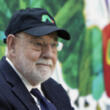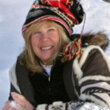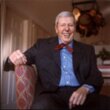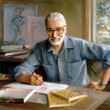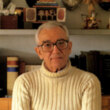Two little trains
Description
'skillfully designed and composed, Pizzoli's cheerful interpretation is thoroughly modern and charming. Swoonworthy for train lovers and preschoolers alike.' 'Kirkus (starred review)
The classic picture book from Margaret Wise Brown about two trains and their cross-country journey from east to west, with a bold new look from Geisel Award'winning artist Greg Pizzoli.
Two little trains went down the track,
Two little trains went West.
PUFF PUFF PUFF
CHUG CHUG CHUG
Two little trains to the West.
A streamlined train and a little old train journey through hills and over mountains, crossing rivers and plains, in this treasured story from Margaret Wise Brown, author of Goodnight Moon. Reimagined with bold and vibrant art by Geisel Award'winning artist Greg Pizzoli, this updated edition is perfect for fans of things that go.
Makes for a great baby shower gift!
"Pizzoli's illustrations...add texture, vibrancy, and bring the journey to new life....Toddlers and preschoolers who love trains will delight in the tale while adults familiar with the original book will appreciate the opportunity to introduce it to a new generation."'School Library Journal (starred review)
"The soothing clickity-clack of the late Brown's verse lulls as effectively as when it first appeared 70 years ago."'Publishers Weekly (starred review)
'this is a storytime winner. Blocky clear shapes, vivid colors, and simple designs make each page burst with an energy that will appeal to the smallest child.''Booklist
More Details
9781952183171
Similar Titles From NoveList
Published Reviews
Booklist Review
Pizzoli gives new life to Brown's classic story about two little trains heading West. Neon colors in bright orange, yellow, green, and blue pop, while occasional oversize text CHUGS and PUFFS down the long steel track. The streamlined engine always puffs and the steam engine always chugs as they follow the route. The simple, descriptive rhyming text says it succinctly: rain coming down on the two little trains makes them darker, wet, and shiny; snow covers them, and they get white and furry; and dust storms swirl around them. The trains go through a tunnel, cross a river, and climb great high mountains to their destination and the satisfying conclusion. This is a storytime winner, as the repetitive words give children a chance to chime in as the trains go to the West. The vibrant illustrations were created digitally using custom-made rubber stamps. Blocky clear shapes, vivid colors, and simple designs make each page burst with an energy that will appeal to the smallest child.--Lolly Gepson Copyright 2019 Booklist
Publisher's Weekly Review
"Two little trains/ went down the track,/ two little trains went West.// PUFF PUFF PUFF/ CHUG CHUG CHUG/ two little trains to the West." The soothing clickity-clack of the late Brown's verse lulls as effectively as when it first appeared 70 years ago, illustrated first by Jean Charlot, then by Leo and Diane Dillon. This treatment by Geisel Medalist Pizzoli shows the two trains journeying in tandem through tunnels and over bridges. Toylike rubber stamp illustrations offer a grainy, vintage look, the trains' repeated sounds set in outsize, circus poster--style type. Here, the two trains run on the same track--the "little old" engine first; the newer, "streamlined" train, trailing--each headed across the country's vast interior through night and day, rain and snow, and hot sun rendered in faded colors. The trains start over a brick bridge crossing a wide river ("Look down/ look down/ below the bridge,/ at the deep dark river going West"), cross mountains and weather, arrive at an ocean full of origami-like fish, and rest at last in a sunbaked city: "They had come to the edge of the West." Brown's classic offers a beginner's map of the country's geography in a rhythmic journey that can be taken over and over again. Ages 4--8. (Mar.)
School Library Journal Review
PreS-Gr 2--First released in 1949 and illustrated by Jean Charlot, this classic story has been reimagined for a new generation with brand new illustrations. Brown tells readers that "Two little trains went down the track, two little trains went West. Puff Puff Puff. Chug Chug Chug." Two different trains--a streamliner and a steam engine--both travel down a long steel track, through a dark hill, over a river, through the rain, through the snow, and on until they reach the edge of the West. Pizzoli's illustrations have the look of sponge painting; stamps and a mix of digital media add texture, vibrancy, and bring the journey to new life. Train lovers will delight in the simple singsong text. VERDICT Toddlers and preschoolers who love trains will delight in the tale while adults familiar with the original book will appreciate the opportunity to introduce it to a new generation.--Kristen Todd-Wurm, Middle Country Public Library, NY
Horn Book Review
(Preschool, Primary) First published in 1949, Two Little Trains is a mesmerizing incantation with a folkloric resonance, a quintessentially simple poem that echoes a train's own rhythm: ""Two little trains went down the track, / Two little trains went West /.... Look down, look down / that long steel track, / That long steel track / To the West."" Jean Charlot's original illustrations featured a streamliner, ridden by a boy, that runs alongside an old steam train with a girl perched on its caboose. Although Charlot's elegantly spare black-and-white and color-separated graphics were notable for their sophistication, they are dated, at the very least, by the use of pink and blue to designate gender. Adopting a different story strategy, the Dillons contrast a child's play with the world it represents. On the verso, a stylized ""streamlined train"" puffs through mountains, crosses a river, and advances through changing weather. Meanwhile, on the recto, the ""little old train"" (an old-fashioned wooden toy, evidently a gift from someone who has just arrived by train) follows a rug-fringe track, tunnels under a propped up book, negotiates a bathtub rim, and climbs the banister until-as the streamliner reaches the ocean at ""the edge of the West""-it stops by the bed of a sleeping child. Everything about the book's design enhances its quiet mood: its broad shape; the expertly balanced compositions; the rounded, simplified forms, whether smoothly sculptural or rendered in silhouette; the delicately subdued bright palette; the total absence of live action or indeed of any perceptible movement. No wind ripples the water or changes the snow's direction. The child appears only in the last scene, and then as just the top of a dark head resting on an unindented pillow. This beautiful new edition is in the same spirit as Brown's Goodnight Moon and should please the same broad audience. It's wonderful to have it back in such appropriate, and handsome, new garb. (c) Copyright 2010. The Horn Book, Inc., a wholly owned subsidiary of Media Source, Inc. No redistribution permitted. All rights reserved.
Kirkus Book Review
First illustrated by Jean Charlot (1949) and then by Leo and Diane Dillon (2001) and now reimagined by Pizzoli, Brown's enduring classic follows two distinct trains on their journeys west. "Two little trains / went down the track, / two little trains went West. // PUFF PUFF PUFF / CHUG CHUG CHUG / two little trains to the West." Over hills and through rain, snow, night, and wind, the trainsone a steam engine, the other a streamlinertravel. Brown uses onomatopoeia to punctuate the narrative while Pizzoli exploits it to differentiate the two locomotives. He makes every spread a visual play on contrasts, from the different train stylizations and type styles (sans serif for the streamliner's "PUFF" and serif for the steam engine's "CHUG") to the complementary color palettes. The bold illustrations, created with rubber stamps and Photoshop, are done in a simplified style. Accessible, appealing, and understandable, both artwork and text are deceivingly simple, belying the sophisticated nature of each. Lively, rhythmic, and often rhyming text propels trains and readers down the tracks while evocative descriptions work within the confines of a few phrases per page. Skillfully designed and composed, Pizzoli's cheerful interpretation is thoroughly modern and charming. Swoonworthy for train lovers and preschoolers alike. (Picture book. 3-7) Copyright Kirkus Reviews, used with permission.
Booklist Reviews
Pizzoli gives new life to Brown's classic story about two little trains heading West. Neon colors in bright orange, yellow, green, and blue pop, while occasional oversize text CHUGS and PUFFS down the long steel track. The streamlined engine always puffs and the steam engine always chugs as they follow the route. The simple, descriptive rhyming text says it succinctly: rain coming down on the two little trains makes them darker, wet, and shiny; snow covers them, and they get white and furry; and dust storms swirl around them. The trains go through a tunnel, cross a river, and climb great high mountains to their destination and the satisfying conclusion. This is a storytime winner, as the repetitive words give children a chance to chime in as the trains go "to the West." The vibrant illustrations were created digitally using custom-made rubber stamps. Blocky clear shapes, vivid colors, and simple designs make each page burst with an energy that will appeal to the smallest child. Preschool-Grade 2. Copyright 2019 Booklist Reviews.
Publishers Weekly Reviews
"Two little trains/ went down the track,/ two little trains went West.// PUFF PUFF PUFF/ CHUG CHUG CHUG/ two little trains to the West." The soothing clickity-clack of the late Brown's verse lulls as effectively as when it first appeared 70 years ago, illustrated first by Jean Charlot, then by Leo and Diane Dillon. This treatment by Geisel Medalist Pizzoli shows the two trains journeying in tandem through tunnels and over bridges. Toylike rubber stamp illustrations offer a grainy, vintage look, the trains' repeated sounds set in outsize, circus poster–style type. Here, the two trains run on the same track—the "little old" engine first; the newer, "streamlined" train, trailing—each headed across the country's vast interior through night and day, rain and snow, and hot sun rendered in faded colors. The trains start over a brick bridge crossing a wide river ("Look down/ look down/ below the bridge,/ at the deep dark river going West"), cross mountains and weather, arrive at an ocean full of origami-like fish, and rest at last in a sunbaked city: "They had come to the edge of the West." Brown's classic offers a beginner's map of the country's geography in a rhythmic journey that can be taken over and over again. Ages 4–8. (Mar.)
Copyright 2019 Publishers Weekly.School Library Journal Reviews
PreS-Gr 2—First released in 1949 and illustrated by Jean Charlot, this classic story has been reimagined for a new generation with brand new illustrations. Brown tells readers that "Two little trains went down the track, two little trains went West. Puff Puff Puff. Chug Chug Chug." Two different trains—a streamliner and a steam engine—both travel down a long steel track, through a dark hill, over a river, through the rain, through the snow, and on until they reach the edge of the West. Pizzoli's illustrations have the look of sponge painting; stamps and a mix of digital media add texture, vibrancy, and bring the journey to new life. Train lovers will delight in the simple singsong text. VERDICT Toddlers and preschoolers who love trains will delight in the tale while adults familiar with the original book will appreciate the opportunity to introduce it to a new generation.—Kristen Todd-Wurm, Middle Country Public Library, NY
Copyright 2020 School Library Journal.

























